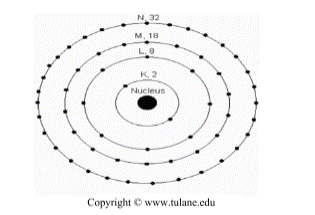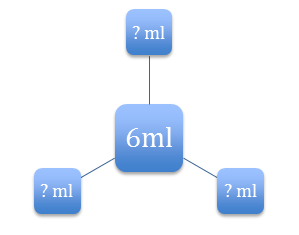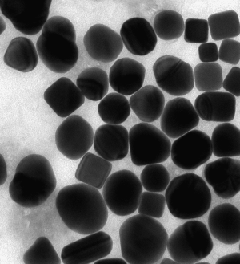Mathematics and Statistics Lesson Plans
Silver Nanoparticles and their Role in Energy Applications
Author: Carol Zavarella
Summary:
Noble-metal nanocrystals are the subject of increasing interest due to their unique physicochemical properties. Silver nanocrystals, in particular, are being intensely studied due to their excellent performance in an increasing array of exciting applications involving areas such as photonics, electronics, catalysis, sensing and biomedicine. It has been established that the physicochemical properties of Ag nanocubes is highly dependent on their size and shape. This lesson will focus on a general discussion of nanotechnology and how size and shape of the Ag nanocubes can be controlled through synthesis. Graphs from UV/Vis spectroscopy and TEM images of the Ag nanocubes will be discussed and analyzed.
Complete Lesson Plan
Zeros all Around
Author: Jesse Hope and Karla Molina
Summary:
The teacher will engage their learners in reflective and collaborative work that will have them represent zero using atoms and MnMs. Students will begin class by accessing prior knowledge using a KWL chart. Using this knowledge they will be given a challenge question about representing zero using their MnMs and a print out of Figure 2 as a skeleton to work off. The class will use a think-pair-share model, when doing their work, to promote collaboration. To close out the lesson, students can answer questions about atom charges and other real life examples of additive inverses. After the lesson students will return to their KWL charts to fill in their learning section. For the summative assessment, students will answer a long response and a short response questions. Homework will give students a chance to spend time thinking about how this topic can be found in their every day life, by asking them to find situation that have additive inverses.
Complete Lesson Plan
Vacation to Transylvania
Author: Jordan Lewis
Summary:
Laboratories often have devices and tools that measure in SI units. Students need plenty of exposure in working with these measurements as well as actual experience doing the measurements. This will help them gain interest in the STEM fields as well as decrease their anxiety in considering one of them as a career. This lesson will be a review of measuring in ml by creating solutions of different colors. They will also be working to convert ºF to ºC and/or ºC to ºF in trying to keep certain cell types in a livable environment. Finally, students will practice their ratio skills by splitting cells in a petri dish.
Complete Lesson Plan
From Data to Information:
Graphing and Reading Data
Author: Pedro Villavicencio
Summary:
This lesson planned for second quarter during the chapter Graphing Linear Equations, allow students to use previous knowledge of graphs, linear functions and slope to familiarize themselves with the interpretation of information represented in graphs. Reading graphs is a skill that allows STEM students and regular individuals to analyze, make educated predictions, understand behavior, etc. Students will get several graphs to learn how to identify and interpret them.
Students will also review linear graphs for which they will then receive data to create scatterplots which they will use to get their own approximation to a linear function using slope definitions. A more accurate method best fit line will be introduced and discussed.
Complete Lesson Plan



